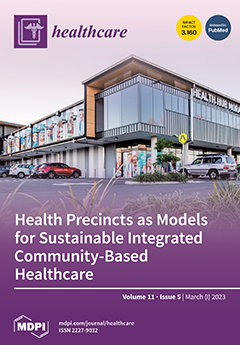Background: Bronchopulmonary dysplasia (BPD) is the most common serious pulmonary morbidity in preterm infants with high disability and mortality rates. Early identification and treatment of BPD is critical.
Objective: This study aimed to develop and validate a risk scoring tool for early identification
[...] Read more.
Background: Bronchopulmonary dysplasia (BPD) is the most common serious pulmonary morbidity in preterm infants with high disability and mortality rates. Early identification and treatment of BPD is critical.
Objective: This study aimed to develop and validate a risk scoring tool for early identification of preterm infants that are at high-risk for developing BPD.
Methods: The derivation cohort was derived from a systematic review and meta-analysis of risk factors for BPD. The statistically significant risk factors with their corresponding odds ratios were utilized to construct a logistic regression risk prediction model. By scoring the weights of each risk factor, a risk scoring tool was established and the risk stratification was divided. External verification was carried out by a validation cohort from China.
Results: Approximately 83,034 preterm infants with gestational age < 32 weeks and/or birth weight < 1500 g were screened in this meta-analysis, and the cumulative incidence of BPD was about 30.37%. The nine predictors of this model were Chorioamnionitis, Gestational age, Birth weight, Sex, Small for gestational age, 5 min Apgar score, Delivery room intubation, and Surfactant and Respiratory distress syndrome. Based on the weight of each risk factor, we translated it into a simple clinical scoring tool with a total score ranging from 0 to 64. External validation showed that the tool had good discrimination, the area under the curve was 0.907, and that the Hosmer–Lemeshow test showed a good fit (
p = 0.3572). In addition, the results of the calibration curve and decision curve analysis suggested that the tool showed significant conformity and net benefit. When the optimal cut-off value was 25.5, the sensitivity and specificity were 0.897 and 0.873, respectively. The resulting risk scoring tool classified the population of preterm infants into low-risk, low-intermediate, high-intermediate, and high-risk groups. This BPD risk scoring tool is suitable for preterm infants with gestational age < 32 weeks and/or birth weight < 1500 g.
Conclusions: An effective risk prediction scoring tool based on a systematic review and meta-analysis was developed and validated. This simple tool may play an important role in establishing a screening strategy for BPD in preterm infants and potentially guide early intervention.
Full article






